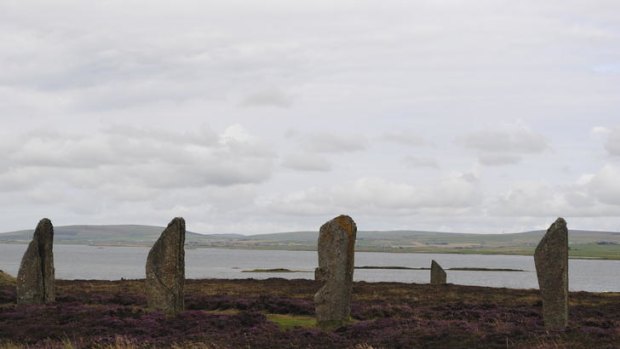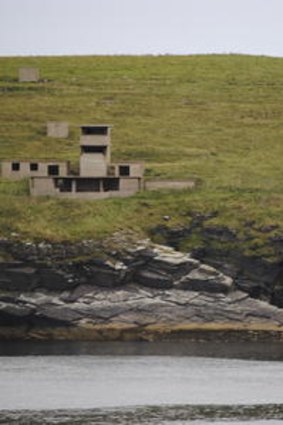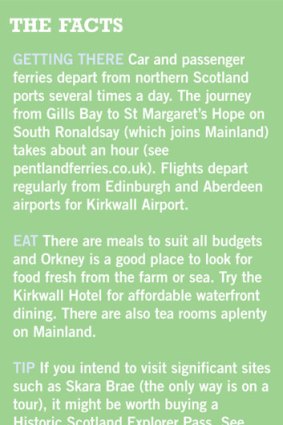This was published 12 years ago
Another world
David Adams gets away from it all on the Orkney Islands and steps 5000 years back in time.

The Ring of Brodgar, a smaller but stunning version of Stonehenge.Credit: David Adams
It looks ready to live in — a roomy home complete with furnishings including bed frames, a central hearth and a nice dresser. It's hard to believe it's 5000 years old.
Nestled in the dunes above a windswept beach on the western side of Mainland — the largest of the 70 or so Orkney Islands, which lie about 10 kilometres off the north coast of Scotland — the neolithic settlement of Skara Brae remained buried until a freak storm stripped off all the covering sand in 1850.
Other neolithic monuments in the World Heritage-listed area west of Kirkwall — the "capital" of the Orkneys — include Maeshowe, a stunning 5000-year-old chambered tomb (in summer, take the dusk tour for the full impact), the sentinel-like Standing Stones of Stenness, and the Ring of Brodgar, a smaller but nonetheless stunning version of a Stonehenge-like ring. There's also a host of sometimes harder to find smaller tombs and monuments further afield.

World War II fortifications.Credit: David Adams
More recent — dating from about 2000 years ago — are the mysterious brochs, round stone towers like that at Gurness. And, although it's been part of Scotland for 500 years, there's still more than a hint of its past as a stronghold of the Vikings — from the magnificent 12th-century St Magnus Cathedral in Kirkwall (named for a Norse warlord who, so the story goes, was killed by the cook of his cousin Haakon about the year 1100) to the remains of the Brough of Birsay, a Viking settlement on the west side of Mainland.
Worth seeing, too, are more recent historic sites including the Churchill Barriers, built by Italian prisoners of war to provide protection for the British fleet at Scapa Flow, and the beautiful chapel the prisoners made. There's also some great diving in Scapa Flow, where you can see the remains of the German fleet — scuttled by German sailors after the end of World War I to prevent the ships being used by the British.
The Orkneys also have spectacular scenery and wildlife. As well as some of the highest cliffs in Britain, there's the rock stack known as Old Man of Hoy, just off the island of Hoy. You might want to head to some of the smaller islands, such as Westray or Shapinsay, to get up close and personal with wildlife including puffins. Ferries depart daily from Kirkwall (check carefully out of season) and flights are also possible.

Accommodation on the Orkneys is more limited than in a major city but hotels, guesthouses, youth hostels and bed and breakfasts are available (but it might be harder to book out of season). Eating out is also more limited but there are still plenty of options, particularly in Kirkwall.
Lastly, while the Orkney Islands are definitely a summer holiday destination, don't expect to spend a lot of time swimming — unless you're a fan of a chilly dip. But then, alongside the appeal of its ancient remains and natural assets, the remoteness of the Orkneys makes it an ideal place to get away from it all.
Sign up for the Traveller newsletter
The latest travel news, tips and inspiration delivered to your inbox. Sign up now.